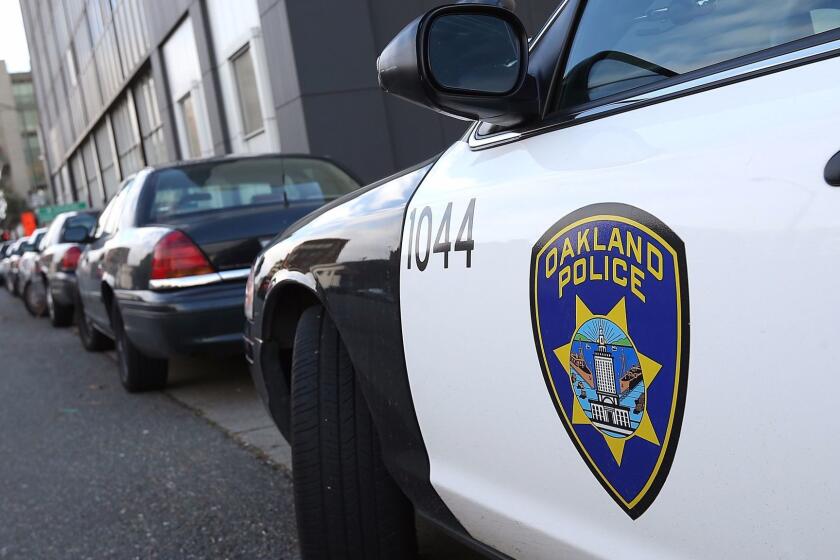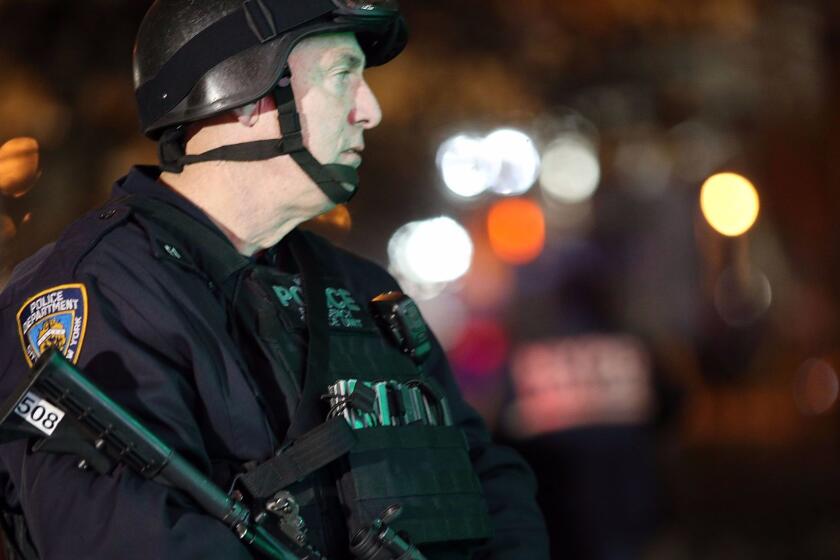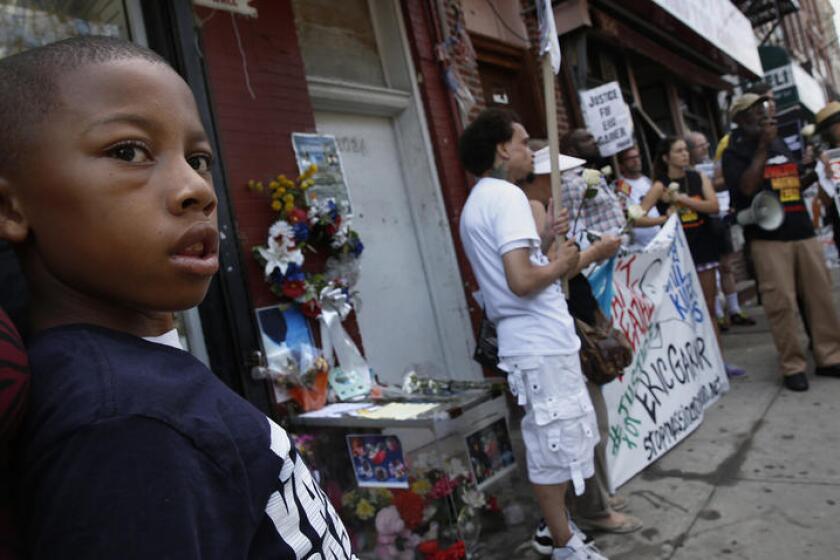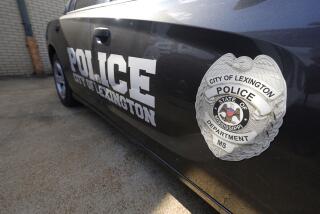Police officers treat Black and white men differently. You can hear it in their tone of voice
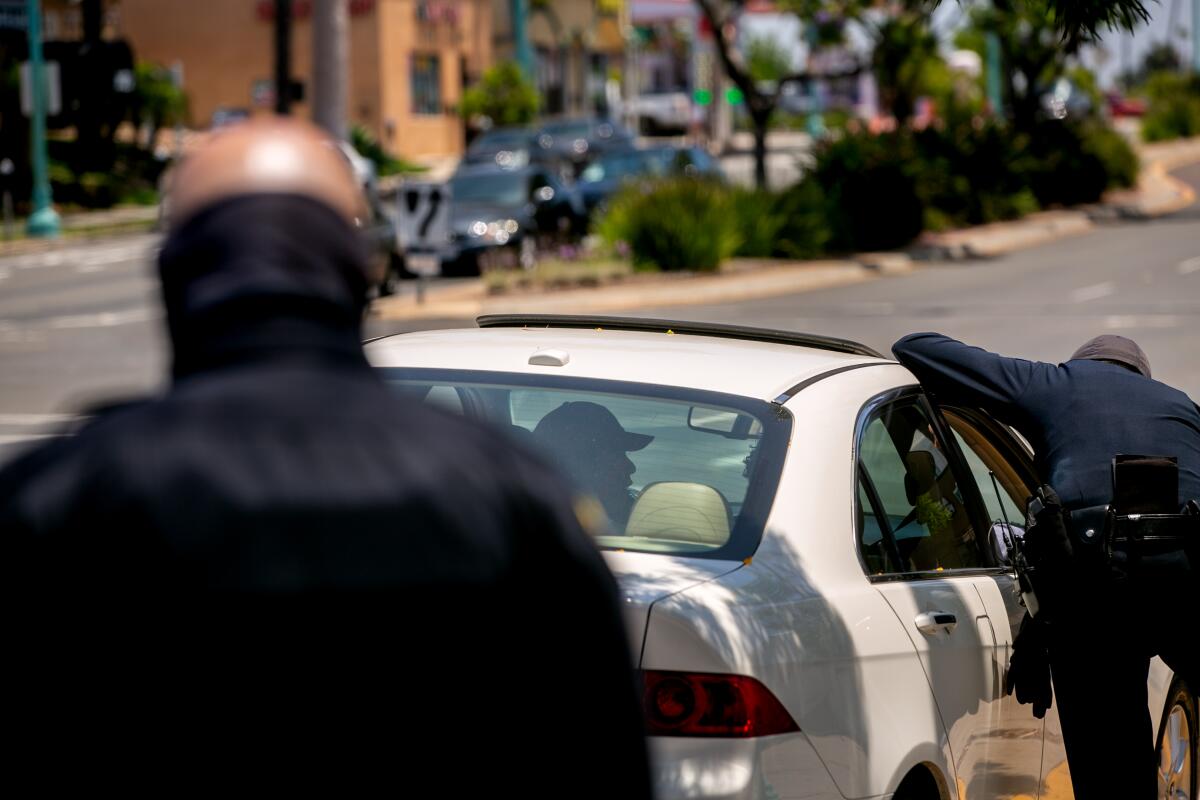
- Share via
Scientists who analyzed the body-camera footage from more than 100 police officers have found a subtle but clear pattern: During traffic stops, officers spoke to Black men in a less respectful and less friendly tone than they did to white men.
This disparity in treatment is not only real but may also help to fuel a cycle of mistrust between police and the Black community, the researchers reported this week in the Journal of Personality and Social Psychology.
Law enforcement experts agreed.
“It really reflects the amount of work that law enforcement needs to continue to do,” said Diane Goldstein, executive director of the nonprofit Law Enforcement Action Partnership. “We have to recognize the problem, we have to acknowledge our unconscious biases in these types of situations, and we have to acknowledge the role that race plays in the criminal justice system.”
The highly publicized deaths of Black men, women and children at the hands of police in recent years have focused the public’s attention on the deadly consequences of such discrimination, and scientists have been busy quantifying the myriad ways that this disparity in treatment manifests.
A 2019 paper, for example, found that Black men were 2½ times more likely than white men to be killed by police. Additional investigations around the U.S. have found that Black residents suffer a disproportionate share of use-of-force incidents relative to their share of the population.
Much of what’s known about disparities comes from administrative records, such as reports of police stops, said Nicholas Camp, a social psychologist at the University of Michigan and lead author of the new study.
About 1 in 1,000 black men and boys in America can expect to die at the hands of police. That risk is 2.5 times higher than for white men, new research shows.
Take a 2020 analysis of 95 million traffic stops that found Black Americans are more likely to be pulled over than white drivers and more likely to be searched, even though they’re less likely than their white peers to be carrying illegal contraband.
More than 60 million Americans are thought to make contact with law enforcement each year, which means that even small differences in treatment can add up to a big effect. But there’s a limit to what researchers can learn about these differences, because police stop reports typically offer little insight into the human-to-human interaction that actually took place.
“Every interaction that people have with law enforcement [is] really consequential for building or eroding trust, but we don’t really know what police officers actually do when they’re interacting with the public,” Camp said. They can’t reveal whether the officers treated community members with respect, or with contempt.
Body-worn cameras have helped fill in this gap. These cameras, which have become increasingly common in police departments across the U.S. as a way to increase transparency and accountability, turned out to be a rich source of data on the daily interactions between officers and residents.
In previous research published in the Proceedings of the National Academy of Sciences, Camp and his colleagues analyzed more than 100 hours of police body-cam footage and concluded that officers’ language was less respectful toward Black residents than their white peers.
Compared with white residents, Black community members were 57% less likely to hear the officer use words such as “sir,” “ma’am” and “thank you” and 61% more likely to hear words such as “dude” and “bro” and commands such as “hands on the wheel.”
After reviewing transcripts of traffic stops involving 981 motorists, Stanford researchers have come up with proof of something that many Americans have believed for a very long time: Police officers tend to treat black citizens with less respect than white citizens.
For the new paper, Camp and his colleagues focused not on what officers said but on how they said it.
The scientists analyzed hundreds of audio clips — each roughly 10 seconds long — from routine traffic stops of Black or white men. The researchers filtered out the high frequencies of the sound clips, which essentially rendered the clips unintelligible but left the tone of voice intact. They also masked the drivers’ voices with “brown noise,” so that anyone hearing the clip would not be able to guess the motorists’ race.
The researchers then asked more than 400 people — a diverse group of white, Latino, Asian and Black volunteers — to listen to the clips and rate the officers’ tone of voice.
Across the board, clips of officers speaking to Black men got lower marks for friendliness, respectfulness and ease than those of officers speaking to white men — even though the listeners were not aware of the drivers’ race.
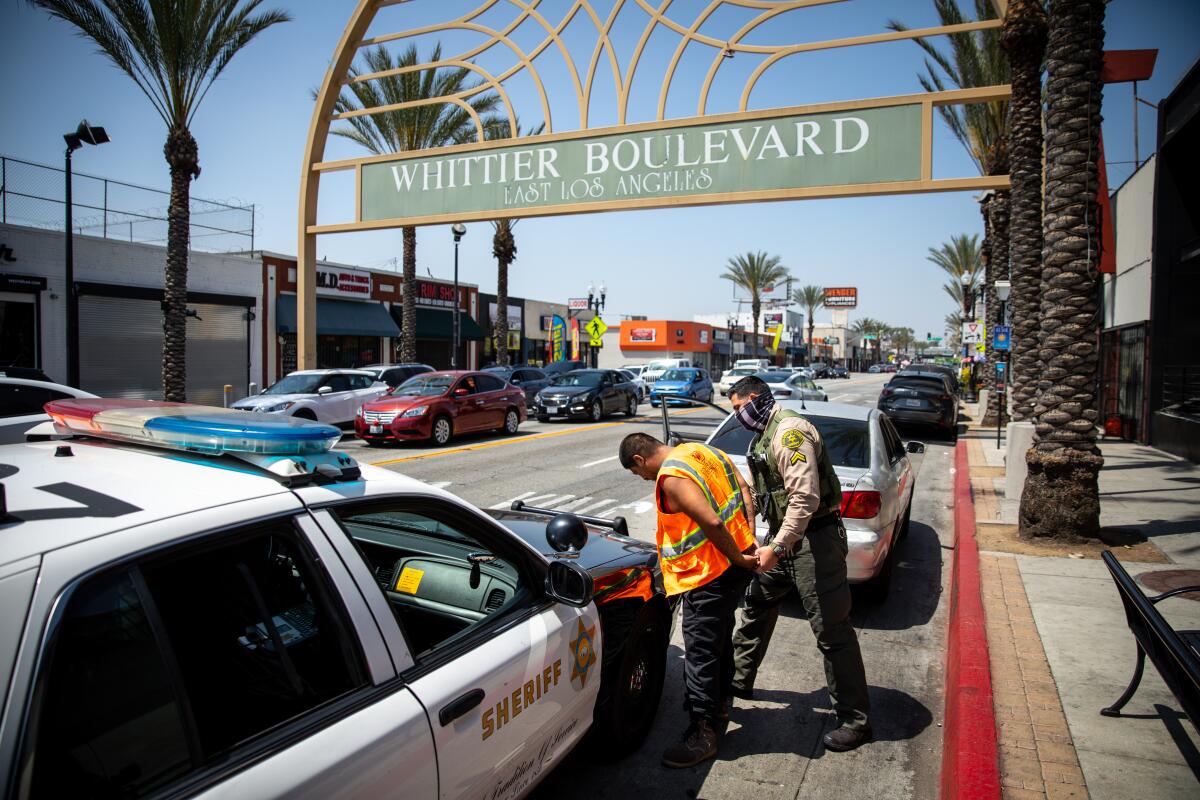
On a scale of 1 to 6, the average score of officer tone toward white drivers was 3.72 (slightly positive) while the average score toward black drivers was 3.5 (neither positive nor negative).
“They’re not huge, but that’s not the point,” said Tracey Meares, a law professor at Yale University who specializes in citizen perception of police and was not involved in the study. “The point is that there are differences that can be detected.”
The point is that there are differences that can be detected.
— Tracey Meares, Yale University law professor
The gap remained even when researchers controlled for a range of factors, including the driver’s age and sex, the officer’s race and gender, whether a citation was issued or a search conducted, and the listener’s age, political orientation, race and gender.
The scientists also found that listeners who said they’d been treated unfairly by police tended to rate the officers’ tone as more negative, less respectful and less friendly than listeners who said they’d been treated more fairly.
Investigating this issue further, the researchers asked some participants to listen to either the 40 most positively rated or the 40 most negatively rated audio clips, and then asked them to describe a hypothetical officer in that department.
Those who listened to the more negative clips described an officer who was more likely to treat citizens rudely or to be accused of racial profiling — suggesting that an officer’s negative tone can have an effect on a person’s perception of the police in general.
When New York police officers temporarily reduced their “proactive policing” efforts on low-level offenses, major-crime reports in the city actually fell, according to a study based on New York Police Department crime statistics.
In another experiment, the researchers asked participants to listen to 20 randomly selected audio clips of police stops. Participants who listened to clips of Black drivers being stopped were less likely to feel that officers would treat them with fairness in a similar situation — a sign that individual officers can undermine trust in the institution as a whole.
“This is a [really] amazing study,” said Meares, who praised the researchers’ methods for removing the specific meaning in the voices while leaving their tone intact. “I wish I did this study.”
Goldstein, who spent more than two decades in the Redondo Beach Police Department, said she was struck by the way listeners’ prior experience with police played a role in their positive or negative impression of the audio clips.
She pointed out that she and other officers are trained in restorative justice, setting respectful patterns and de-escalating situations. And yet, “the perception of our interaction with this citizen can be completely ruined by that one police officer who mistreated someone.”
People consistently perceive black men to be bigger and more muscular than they actually are — and as more of a threat — than they do white men of the same size, a new study shows.
Goldstein was quick to point out that the disparities in vocal tone are symptomatic of a larger problem in the relationship between police and the communities they serve.
“Think about this,” she said. “Lack of trust means victims, survivors, witnesses won’t talk to us — which makes it harder to do our job, which makes our communities less safe, for not just our community members but also for our police officers.”
Ultimately, the findings highlight just how challenging it can be to institute change in behaviors and practices that are as widespread as they are deeply ingrained — and not just in police departments.
“A lot of this probably is unconscious,” Meares said. “It says to me that it’s work that needs to be done by everyone — and interventions, if you want to call it that, need to be societywide. Because why would we think that the officers in this study are fundamentally different from anyone else?”
